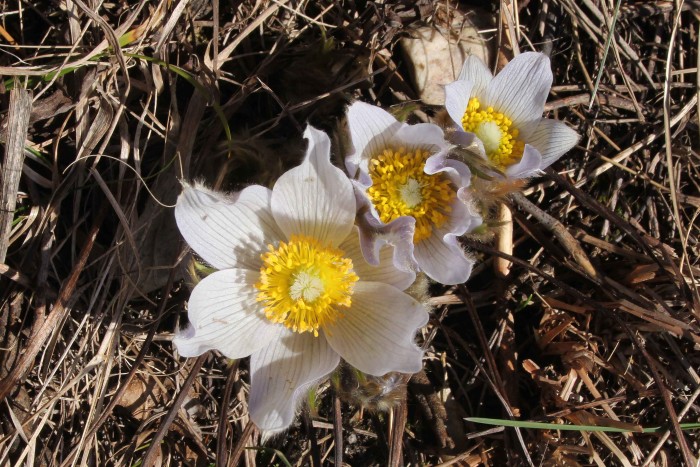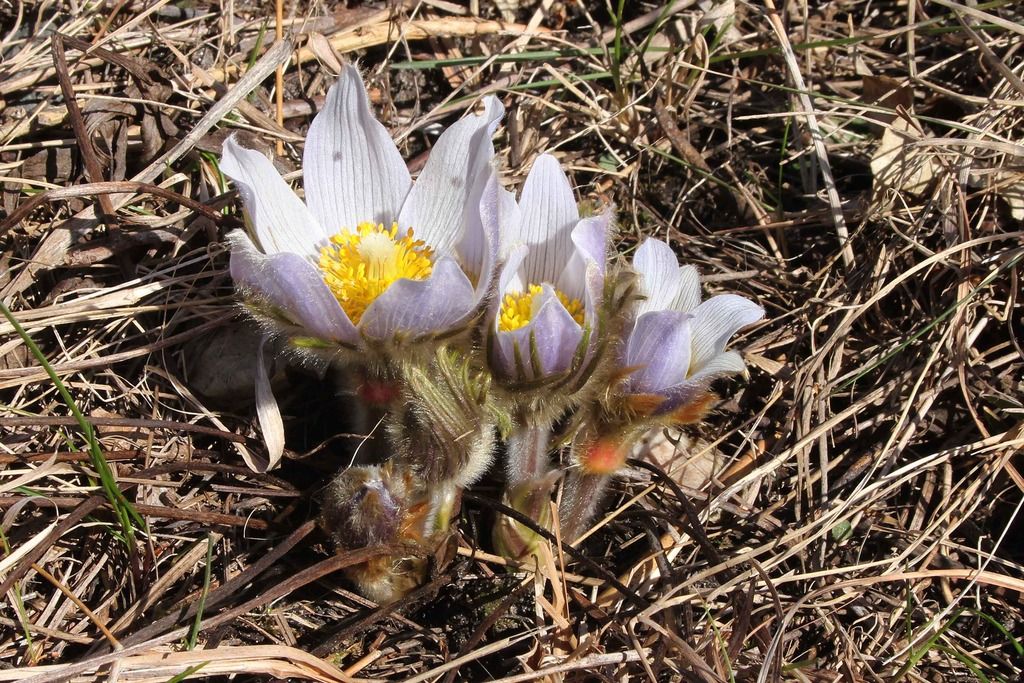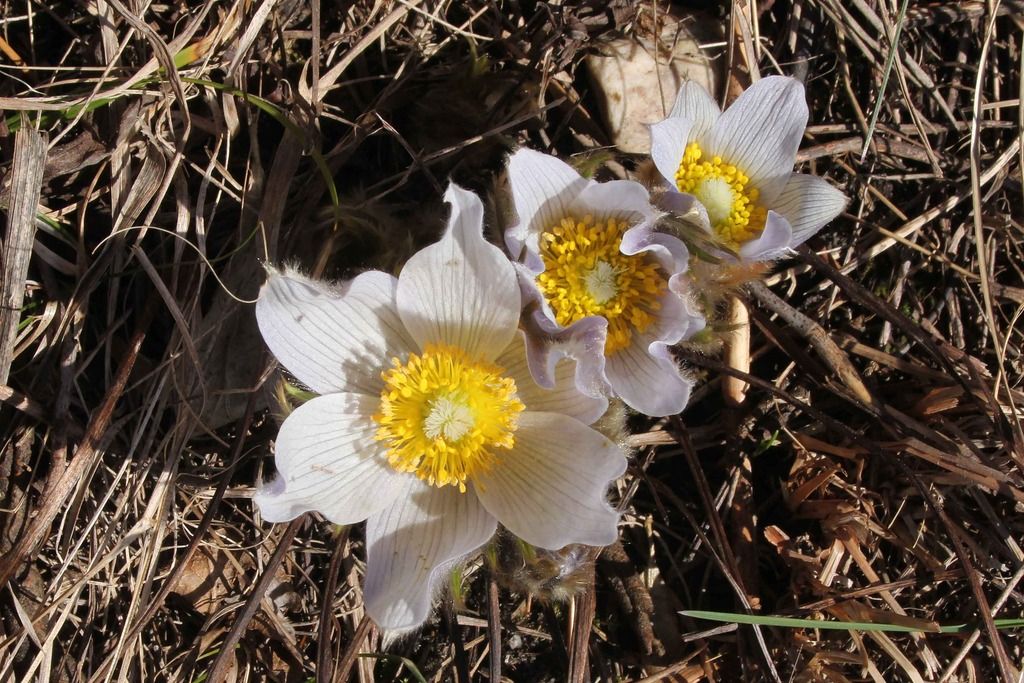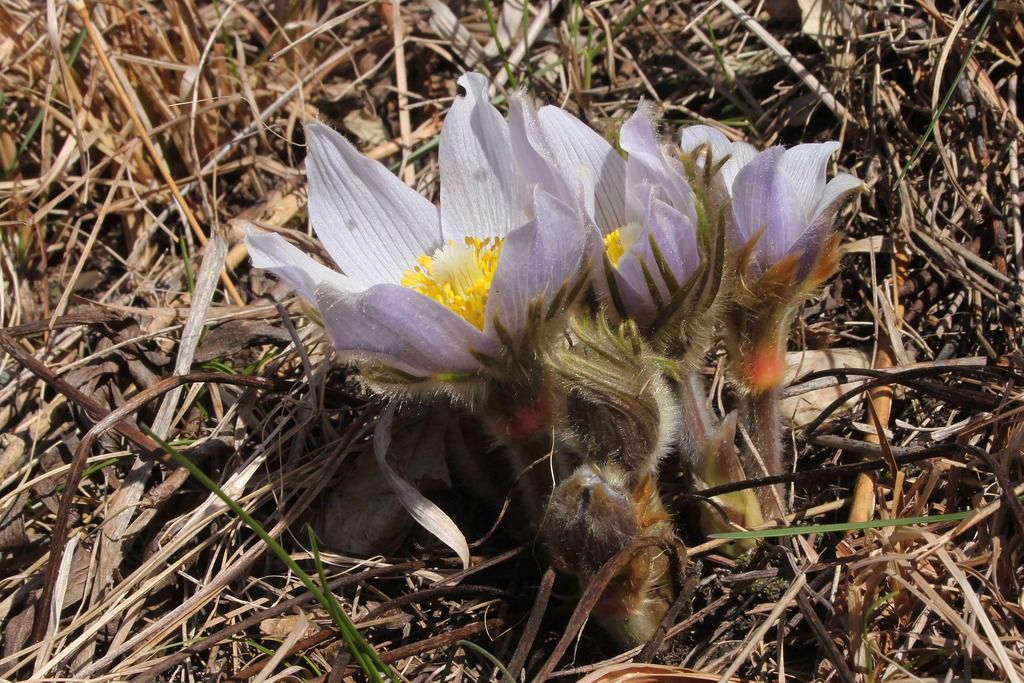Pasque flowers (Anemone patens) are native to much of North America and derive their common name from the French word for Easter, because they are often blooming around the time of that holiday. I’ve never seen today’s featured wildflower, also known as Eastern Pasque Flower, Prairie Crocus, or Cutleaf Anemone. Fortunately, Iowa naturalist and photographer Eileen Miller found a patch of them a couple of weeks ago at Brushy Creek State Recreation Area in Webster County. She agreed to share some of her pictures and her description of the plant here.
This post is also a mid-week open thread: all topics welcome.
PASQUE FLOWER (ANEMONE PATENS)(family–RANUNCULACEAE)
by Eileen Miller
The earliest blooming native prairie wildflower, the Pasque Flower, is a delight to see blooming in the raw weather of early spring, March into April, often while snow is still on the ground. This little perennial prairie plant survives the cold because it has a thick stem base called a caudex, a long taproot, and hairy stems and leaves.
The conspicuous flowers consists of petal-like sepals in colors from lavendar to pale blue to white, and are about 1 1/2 inches across. Several stems rise 6-8 inches off the ground and on each stem is one flower. Each flower has a compound pistil with numerous styles and many yellow stamens. The palmately divided basal leaves appear after the flower blooms. After the sepals fall away the styles become elongated and plumose. At the base of each mature style is a flattened fruit called an achene. Because of their plumose styles these achenes can be blown about by the wind, dispersing their seed.
Pasque Flowers are heliotropic plants–always facing the sun. this helps the pollen and seeds to develop. They are pollinated by early spring bees and flower flies.
They prefer full sun, dry-mesic to dry conditions and a gritty soil containing gravel or rocky material.
Harmless as these plants appear, they are toxic to sheep. Deer and ground squirrels can eat them with impunity.
In Iowa they are found mainly in the northern two thirds of the state.





